Evergreen shrubs are a fantastic addition to any garden, providing year-round color, texture, and structure. Unlike deciduous plants, which lose their leaves in winter, evergreen shrubs retain their foliage all year, ensuring your garden remains vibrant and attractive through every season. These hardy plants are available in a variety of shapes, sizes, and colors, making them suitable for different landscaping needs and preferences. In this blog, we will explore nine of the best types of evergreen shrubs that you can grow to enjoy continuous color and beauty in your garden, regardless of the time of year.
1. Boxwood (Buxus)

Boxwood shrubs are a classic choice for formal gardens and hedges. They are known for their small, glossy green leaves and dense growth habit. Boxwoods are incredibly versatile and can be shaped into neat hedges, topiaries, or used as foundation plantings. They thrive in full sun to partial shade and prefer well-drained soil. One of the standout features of boxwoods is their ability to retain their vibrant green color even in the harshest winters. With minimal maintenance, these shrubs can add a touch of elegance and structure to any landscape.
2. Holly (Ilex)
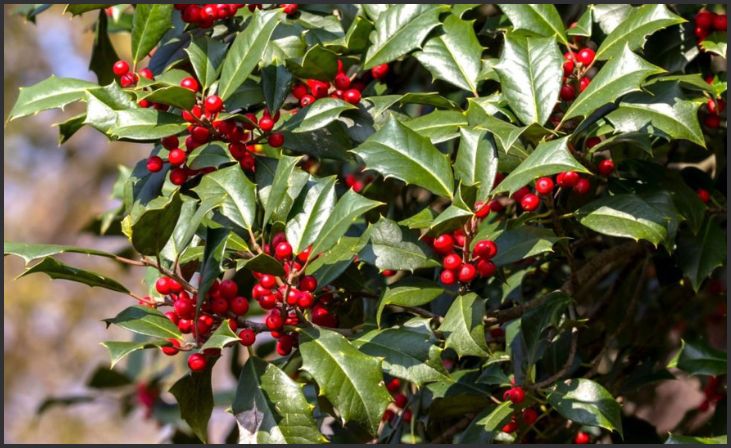
Holly shrubs are famous for their striking, glossy green leaves and bright red berries, which provide a festive look during the winter months. There are many varieties of holly, some with spiny leaves and others with smooth edges, catering to different aesthetic preferences and uses. Holly shrubs can grow in full sun to partial shade and are tolerant of various soil types. They are often used as specimen plants, hedges, or foundation plantings. The vibrant berries not only add color but also attract birds, adding life to your garden year-round.
3. Rhododendron

Rhododendrons are prized for their stunning clusters of flowers that bloom in the spring, but their evergreen foliage provides year-round interest. The large, leathery leaves of rhododendrons can be a deep green, with some varieties offering a bluish or yellowish tint. These shrubs prefer acidic, well-drained soil and thrive in partial shade, making them perfect for woodland gardens. Rhododendrons can be used as stand-alone specimens, grouped together for a mass planting effect, or as part of a mixed border.
4. Camellia

Camellias are beloved for their beautiful, rose-like flowers that bloom from late fall to early spring, providing much-needed color during the colder months. Their glossy, dark green leaves remain attractive throughout the year. Camellias prefer acidic, well-drained soil and thrive in partial shade. These shrubs can be used as focal points in the garden, hedges, or as foundation plantings. With a variety of flower colors including white, pink, and red, camellias offer versatility and charm to any landscape.
5. Japanese Pieris (Pieris japonica)
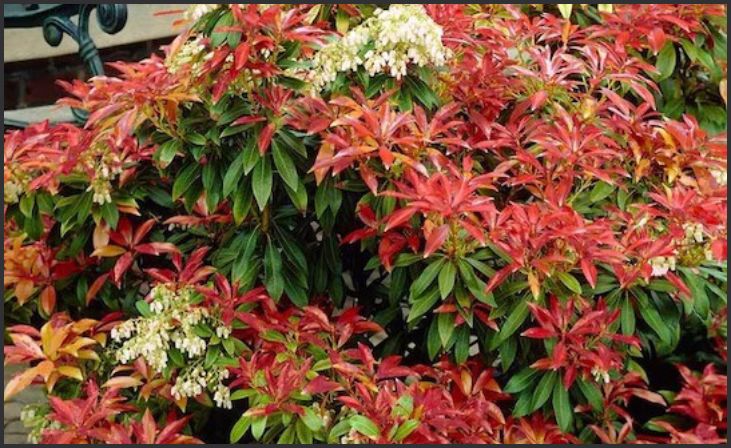
Japanese Pieris, also known as andromeda, is an evergreen shrub that brings multi-season interest to the garden. In early spring, it produces drooping clusters of small, bell-shaped flowers that range from white to pink. The new foliage emerges in vibrant shades of red, bronze, or pink before maturing to a glossy green. Japanese Pieris prefers acidic, well-drained soil and thrives in partial shade. It can be used as a specimen plant, in mixed borders, or as part of a woodland garden, adding both color and texture year-round.
6. Mountain Laurel (Kalmia latifolia)

Mountain Laurel is a stunning evergreen shrub known for its beautiful clusters of pink or white flowers that bloom in late spring to early summer. The glossy, dark green leaves of mountain laurel provide an attractive backdrop throughout the year. This shrub prefers acidic, well-drained soil and partial shade, making it ideal for woodland gardens. Mountain Laurel can be used as a specimen plant or in group plantings to create a lush, colorful display. Its ability to thrive in different conditions and maintain its beauty year-round makes it a valuable addition to any garden.
7. Dwarf Alberta Spruce (Picea glauca ‘Conica’)
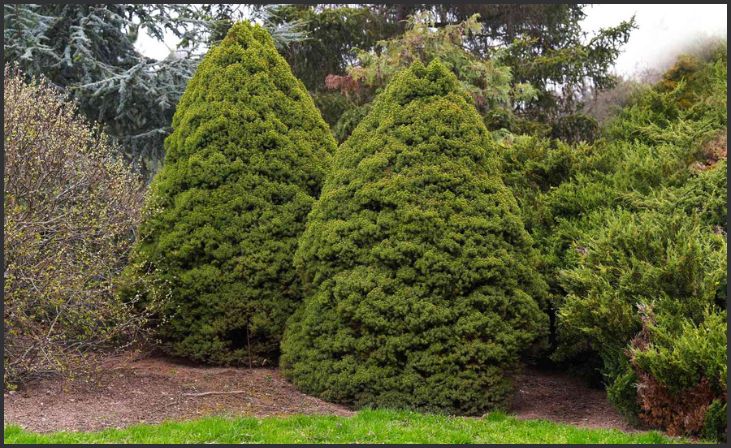
Dwarf Alberta Spruce is a compact, conical evergreen shrub that adds a touch of formality and elegance to the garden. Its dense, bright green needles retain their color throughout the year, making it a standout in any season. This shrub prefers full sun and well-drained soil, and its slow growth rate makes it low-maintenance. Dwarf Alberta Spruce is perfect for use as a specimen plant, in rock gardens, or as a container plant. Its neat, symmetrical shape also makes it an excellent choice for flanking doorways or creating a focal point in the landscape.
8. Leucothoe (Leucothoe fontanesiana)
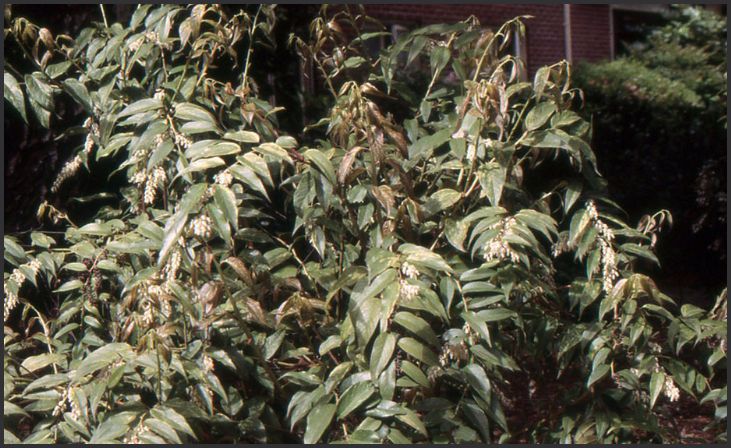
Leucothoe is an evergreen shrub known for its arching branches and glossy, lance-shaped leaves that change color throughout the year. The foliage can range from deep green to shades of bronze, purple, and red, providing constant visual interest. Leucothoe produces small, white, bell-shaped flowers in spring, adding to its charm. This shrub prefers acidic, well-drained soil and thrives in partial to full shade, making it ideal for shady borders and woodland gardens. Its colorful foliage and graceful form make Leucothoe a versatile and attractive choice for year-round color.
9. Yew (Taxus)
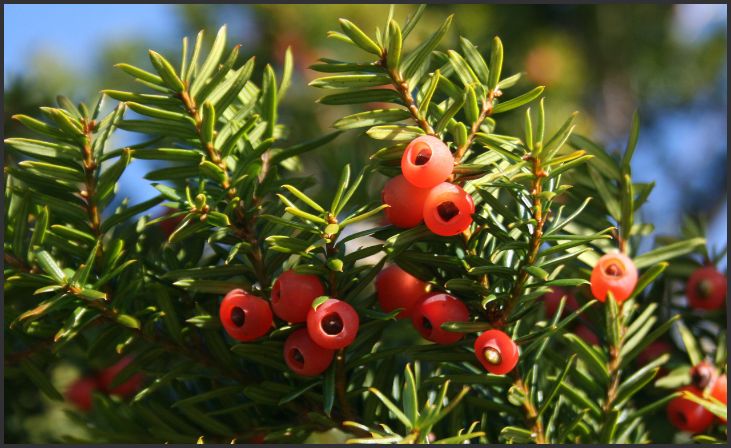
Yew shrubs are renowned for their dark green, needle-like foliage and their adaptability to various growing conditions. They can be shaped into formal hedges, topiaries, or used as foundation plantings. Yews thrive in full sun to deep shade and can tolerate a wide range of soil types, making them incredibly versatile. One of the standout features of yew shrubs is their longevity and durability, with some specimens living for hundreds of years. Their dense, evergreen foliage provides year-round structure and color, making them a staple in many gardens.
Conclusion
Evergreen shrubs are an essential component of any garden, providing continuous color and interest throughout the year. From the formal elegance of boxwood and yew to the vibrant flowers of rhododendron and camellia, there is an evergreen shrub to suit every landscape style and preference. These hardy plants not only enhance the aesthetic appeal of your garden but also offer practical benefits such as privacy, windbreaks, and wildlife habitat. By incorporating a variety of evergreen shrubs into your garden, you can ensure a beautiful and dynamic outdoor space no matter the season.

